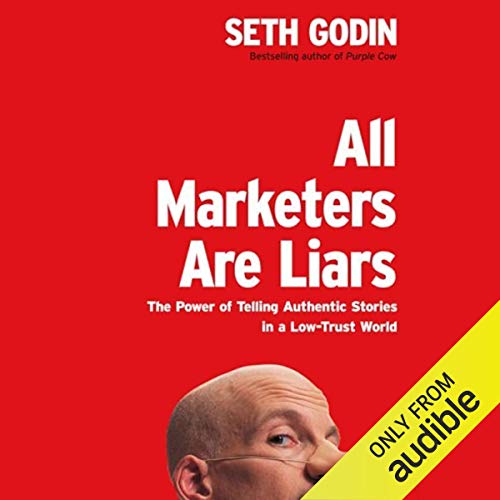I have been a fan of Seth Godin’s blog posts for a while but I only just got the chance to read his book All Marketers are Liars Storytellers. I know the word ‘story’ is thrown around with such careless abandon now a days that it is almost hard to not get people to yawn when one mentions it but this book tries to explain the art of storytelling starting from its core. A story is usually a way for someone to get a message out but in reality it’s also about confirming a bias or reinforcing someone’s beliefs or foster an existing value system. Seth calls this fitting the story in a frame that is liked by people having a certain worldview. This is essentially the essence of this book.
A marketer doesn’t sell the story. She just tells it in the hope that it resonates with an audience with a specific worldview who already believe it. Great stories make people feel smart about having a certain worldview (beliefs, values and biases) as it provided them the necessary validation they seek. This is why consumers are complicit in marketing.
There are five steps in which a story works. I am going try and summarise my learnings in the rest of this post.

Step 1 – Consumers already have a worldview.
Worldview is a catch all phrase for rules, values, biases, experience that a person is made of. Smart marketing is framing a story that fits into a populations already held worldviews. Preferably a big chunk of people who hold a similar worldview who are the most likely to believe your story. Think of a bell curve of adopters. On the left lie early adopters and on the rightmost section lie the luddites. You start by speaking to the edges and then work your way to the center. Note that all worldviews are not created equal. Almost all word of mouth marketing happens from a small subset of consumers. These early adopters who love sharing need to be at the center of your marketing story.
Step 2 – The story needs to be new.
Our brain responds to a new idea in 4 steps.
1. Compare it with status quo to see if it’s novel and needs attention. Only changes are worth noticing. Brain follows his motto – “if it’s not new, ignore”.
2. Come up with some causation and make a narrative as to how something happened. We don’t like randomness so we create to explain what we observe.
3. Predict what will happen next. If our prediction comes true then we ignore it. If it surprises us, we continue to pay attention to it.
4. We ignore evidences that don’t support our worldview so we can avoid cognitive dissonance so the story needs to not challenge our worldview, it needs to make us feel good about having that particular worldview. If it does, we will believe it and even spread it.
Step 3 - First impressions leads to permanent judgement.
We make snap judgements with almost no data. Research on behavioral economics confirms this. Note that the first contact is not always the first impressions. This is why authenticity matters as you never know which contact with the consumer will drill a specific point in. If the story and the product are authentic then the story will remain consistent and all contacts will display the same message and finally make a great first impression.
Step 4 - Good marketing is about telling a story that is believed
We almost always seek fulfilling our wants and not needs. There is a link between the value a consumer derives from a product and the way it makes her feel. People buy the feeling they get by using our products. This feeling good is what is termed as believing the story.
Step 5 - Authenticity is the key
Authenticity is the glue that keeps all the other steps working together cohesively. A great sorry cannot sustain an inauthentic experience. When the story appeals and the product delivers, is when you get a winning combination of people feeling good of having partaken in the story and they will then spread the word. Of course, not all audience responds to a great story by sharing it with others. Seth calls this the infertile audience. Your get to choose your audience to tell them the story and thus pick the segment that is most likely to pass the word.
Bonus stuff
Seth also explains how an idea fails to germinate or grow virally. Here is how it goes
Why did we fail?
-
Because no one noticed – No one is looking. Our default setting it to ignore stuff. Your story has to be either something is remarkable or so easily available that people just have to notice it.
-
Noticed but did not try – Most people who do notice your stuff are ‘just looking’. Some people are quite driven and will try it though but for the rest you need to make it easy or convenient to try.
-
Tried but did not like – Usually not a problem as if your solution doesn’t work, you will probably not ship it.
-
Liked but did not tell her friends – Generally a function of the category/audience who may or may not be inclined to talk to their friends about it. People constantly rave about restaurants but not their massage therapist. That’s just how worldviews work.
I run a startup called Harmonize. We are hiring and if you’re looking for an exciting startup journey, please write to jobs@harmonizehq.com. Apart from this blog, I tweet about startup life and practical wisdom in books.